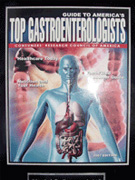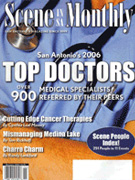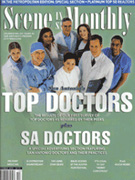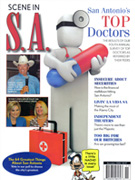Call us today: 1 (210) 615-8308

EGD: Upper GI Endoscopy
EGD (also known as upper GI endoscopy or panendoscopy) is a procedure that enables your physician to examine the lining of the upper part of your gastrointestinal tract, i.e., the esophagus (swallowing tube), stomach and duodenum (first portion of the small intestine) using a thin flexible tube with its own video camera and light source. EGD is usually performed to evaluate symptoms of persistent upper abdominal pain, nausea, vomiting or difficulty swallowing. It is also the best for finding the cause of bleeding from the upper gastrointestinal tract. EGD is more accurate than x-ray films for detecting inflammation, ulcers or tumors of the esophagus, stomach and duodenum. Upper endoscopy can detect early cancer and can distinguish between benign and malignant (cancerous) conditions when biopsies (small tissue samples) of suspicious areas are obtained.
Biopsies are taken for many reasons and do not necessarily mean that cancer is suspected. A cytology test (introduction of a small brush to collect cells) may also be performed. EGD is also used to treat conditions present in the upper gastrointestinal tract. A variety of instruments can be passed through the endoscope that allow many abnormalities to be treated directly with little or no discomfort, for example, stretching narrowed areas, removing polyps (usually benign growths) or swallowed objects, or treating upper gastrointestinal bleeding. Safe and effective endoscopic control of bleeding has reduced the need for trans fusions and surgery in many patients.
WHAT PREPARATION IS REQUIRED?
It is necessary to have a completely empty stomach for the safest and best possible examination. You must stop all solid and liquid intake 8 hours prior to your scheduled exam to help reduce the risk of aspiration. Several days before the examination you should notify the physician of any medications you take regularly, any heart or lung conditions (or any major diseases), and whether you have any drug allergies. You should alert your physician if you require antibiotics prior to undergoing dental procedures, since you may need antibiotics prior to EGD as well.
WHAT CAN BE EXPECTED DURING EGD?
Your physician will review with you why EGD is being performed, potential complications from EGD, and alternative diagnostics or therapeutic options that are available. A local nesthetic may be applied to your throat and an intravenous sedative will be given to make you more comfortable during the EGD procedure; most patients remember or feel very little of the examination and many patients fall asleep during the endoscopy. Some patients may also receive antibiotics before the procedure. The endoscopy begins with you lying comfortably on your left side. The endoscope is passed through the mouth, esophagus and stomach into the duodenum. The instrument does not interfere with breathing. Air is introduced through the instrument and may cause temporary bloating during and after the procedure. The endoscopy usually lasts between 5 and 15 minutes.
WHAT HAPPENS AFTER EGD?
After the test, you will be monitored in the recovery room until most of the effects of the medication have worn off. Your throat may be a little sore for a while, and you may feel bloated right after the procedure because of air introduced into your stomach during the test. In most circumstances, your doctor can inform you of your test results on the day of the procedure; however, the results of any biopsies or cytology samples will take several days.
WHAT ARE POSSIBLE COMPLICATIONS OF EGD?
EGD is generally safe. Complications can occur but are rare when the endoscopy is performed by physicians with special training and experienced in this procedure. BLEEDING may occur in approximately 0.1% from a biopsy site or where a polyp was removed. It is usually minimal and rarely requires blood transfusions or surgery. PHLEBITIS or localized irritation of the vein into where medication was injected may rarely cause a tender lump that may last several weeks, but this will go away eventually. The application of heat packs or hot moist towels may help relieve the discomfort. Other potential risks include a REACTION TO THE SEDATIVES used and complications from heart or lung diseases. Major complications, e.g. PERFORATION (a tear that might require surgery for repair) are very uncommon (less than 1%).
It is important for you to recognize early signs of any possible complication. If you begin to run a fever after the procedure, begin to have trouble swallowing, or have increasing throat, chest or abdominal pain, let your doctor know right away.
Quick Links
- How to prepare for your Endoscopy
How to prepare for your Endoscopy
It is necessary to have a completely empty stomach for the safest and best possible examination. You must stop all solid and liquid intake 8 hours prior to your scheduled exam to help reduce the risk of aspiration. Several days before the examination you should notify the physician of any medications you take regularly, any heart or lung conditions (or any major diseases), and whether you have any drug allergies. You should alert your physician if you require antibiotics prior to undergoing dental procedures, since you may need antibiotics prior to EGD as well.








